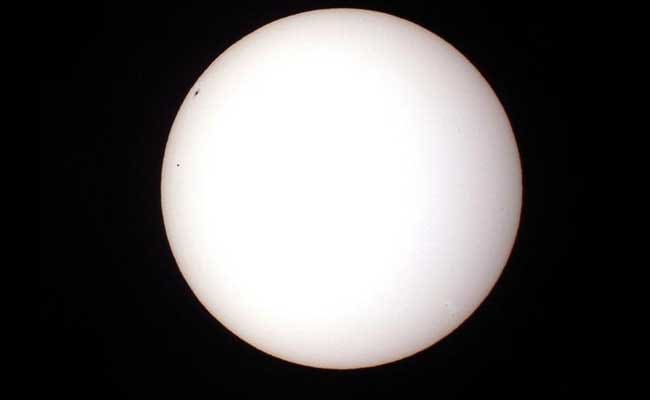
Mercury may be seen through telescopes as a black dot inching over the face of our megastar, offering a celestial spectacle in an effort to Closing seven and a half of hours.
PARIS, FRANCE: Astronomers on Monday had been getting ready for one of the highlights of the skywatchers’ year, while the Sun, Mercury and Earth all line up — a phenomenon that occurs just a dozen or so instances in keeping with century.
Mercury will be visible thru telescopes as a black dot inching over the face of our big name, supplying a celestial spectacle — climate allowing — with the intention to Final seven and a 1/2 hours.
“At the start, Mercury will look as though it’s far nibbling at the brink of the Solar, and then It will very slowly pass its floor and depart the alternative facet,” stated Pascal Descamps of the Paris Observatory.
“It is something rare, as it requires the Sun, Mercury and Earth to be in almost ideal alignment.”
The smallest acknowledged planet inside the Solar Device, Mercury completes an orbit each 88 days, and passes among the Earth and the Solar each 116 days.
However its orbit is tilted with regards to Earth’s, which means that it usually seems — from ourperspective — to bypass above or below the Sun.
Thirteen instances each century, however, the 2 orbits align such that even beginner astronomers can see the tiny planet tens of tens of millions of kilometres (miles) away.
In keeping with Britain’s Royal Astronomical Society (RAS), maximum of Western Europe, the westernelements of North and West Africa, jap North America, and maximum of South The united states might beable to view the whole transit, as a way to Last from 1112 GMT to 1842 GMT.
The relaxation of north and south The united states, the jap Pacific, the the rest of Africa and most of Asia, will see components of the occasion.
Observers in east and southeast Asia and Australasia, but, will miss out totally.
Bizarre planet
The closest planet to the Sun and a 3rd the size of Earth, Mercury is one of the Sun Machine‘s curiosities.
it’s miles one of the four rocky planets of the internal Solar Gadget But has no environment and its metalframe is scarred by using collisions from space rocks.
Sunlight hours on Mercury is six instances warmer than the hottest area on the planet, and middle of the night can be more than twice as bloodless as the coldest place on our planet.
It rotates so slowly — three times for every two orbits — that, bizarrely, Mercury’s day is twice so long as itsyr.
The transit of Mercury was first recorded by means of French astronomer Pierre Gassendi. He determined itvia a telescope in 1631, two a long time after the tool became invented.
German astronomer Johannes Kepler had successfully predicted that transit, However died in 1630 beforehe should witness the occasion.
The Final Mercury lineup became 10 years ago, and the subsequent will be in 2019, followed through2032 and 2049.
“it’s miles usually interesting to see uncommon astronomical phenomena inclusive of this transit of Mercury,” said RAS President Martin Barstow. “They show that astronomy is a technology that is reachableto everybody.”
But be warned: looking at once At the phenomenon can result in everlasting eye damage, as only a totally small part of the Solar will be blocked out.
One alternative is to apply a telescope or binoculars to mission the image onto a white surface. Stargazersalso can examine the event via a telescope with a strong filter or — most correctly of all — on theInternet.





